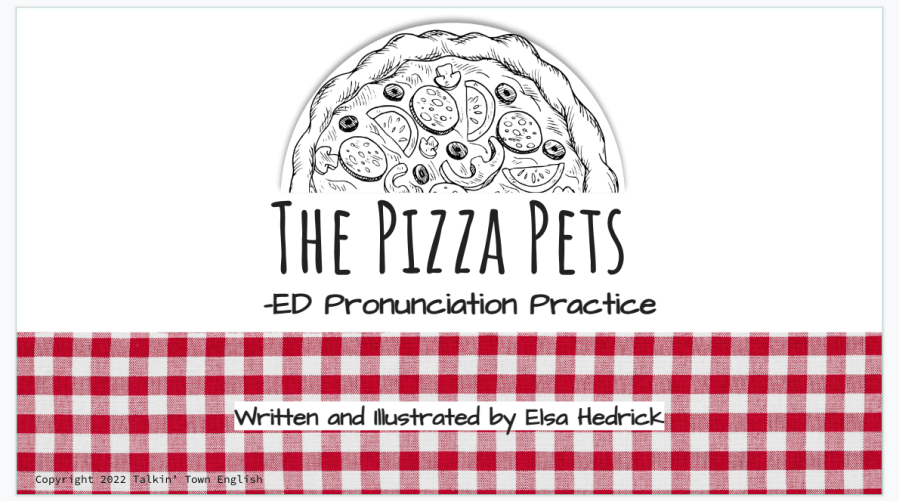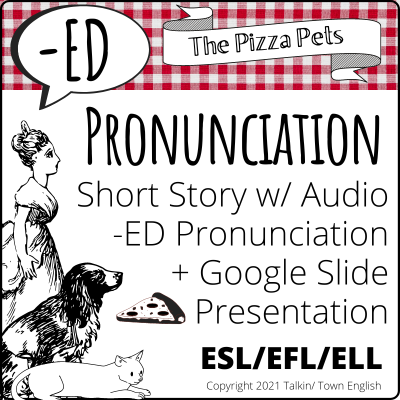Every seasoned ESL teacher knows the good old -ED pronunciation rules. When a word ends in |t| or |d|, an extra syllable is added and pronounced as |id|. When a word doesn’t end in |t| or |d|, the pronounced ending is truncated to a stopped |t| or |d| and no extra syllable is added. If you’re still reading, you’re either a linguist, a veteran ESL teacher, or extremely confused right now. I’ve taught this lesson top-down, sideways, and backwards, and I think I’ve finally found the best approach.
The Pizza Pets is a short story about a woman who loses her pets and her pizza. It’s a simple story, but it’s loaded with 50 common words ending in -ed, like arrived, called, and stopped. Students can choose to read, listen, and repeat sounds for each of the words.
I developed this story while teaching students form Latin-based language backgrounds, particularly Portuguese, French and Spanish. Students from these linguistic backgrounds often have trouble pronouncing stopped sounds correctly. For example, the word “stopped” is sometimes incorrectly pronounced “stop-id.”
While students often have no problem grasping the rule in isolation, it’s a different story when it comes to pronouncing these words at will. I needed a way to provide students with practice ad nauseam, and thus, The Pizza Pets was born.
The Google Slide audiobook I’ve created is perfect for in-person and distance learning platforms. Students will hear the correct pronunciation of each word throughout the story, and then they can click at each -ed word for additional repeated practice.
When I tried this lesson out on my private online students from Brazil, they absolutely loved it! They gained confidence in reading common -ed words and felt accomplished after finishing a complete text in English.
The story is easy enough to understand for high beginners, yet not babyish for my adult learners. I saw immediate improvement in my students’ ability to recognize and pronounce those -ed words correctly following this lesson. Yay!
I created some companion worksheets and a complete lesson plan that can be easily followed or edited by teachers.
You can view the complete resource with worksheets and instruction here.
You can read the online flipbook version here.
I hope you enjoy this resource. I’d love to hear your feedback in the comments below.
Thanks and happy teaching!


